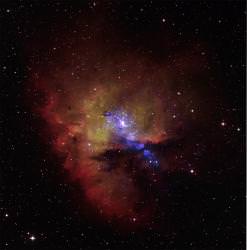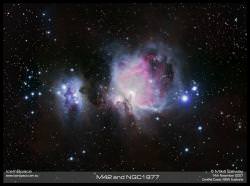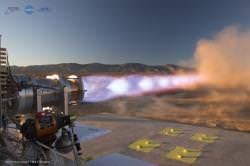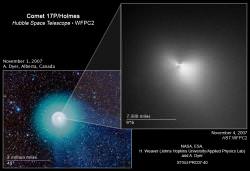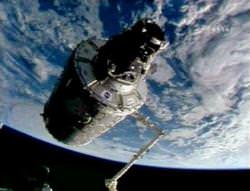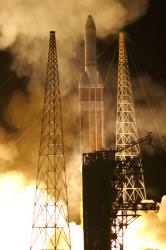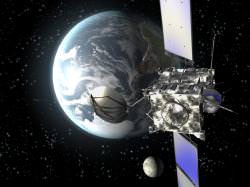With the shuttle and station in the news these days, it’s easy to forget there’s a whole other space program in the works: Constellation. Over the next decade, we’ll go back to the Moon – this time to stay. Although it’s inspired by the Apollo program, each piece of hardware is being updated with the latest technology. This week a radical new type of engine was tested at Northrop Grumman; an engine that could help steer spacecraft in space.
Northrop Grumman, one of the contractors on the NASA Constellation Program, announced this week that they’ve tested a new rocket called the TR408.
First a little history. The original Apollo program used thrusters powered by fuels that could be stored at room temperature, but they weren’t very powerful. Furthermore, they were made with toxic chemicals that could be a risk to astronauts and workers.
The new TR408 engine is a hybrid, which can run on almost any state of oxygen and methane. It could be all gas, for example, stored at room temperature. Or it could be all liquid, similar to the liquid oxygen/hydrogen that powers the space shuttle.
The engine was tested for more that 50 separate tests, and was able to generate a steady-state specific impulse of 340 seconds. Just to give you some context, the Apollo thrusters generated a specific impulse of 290 seconds. The shuttle’s liquid hydrogen/oxygen engine gets about 450 seconds.
Although the TR408 doesn’t match up to the efficiency of liquid hydrogen/oxygen, it looks like it’ll be a great compromise for the unique requirements of space travel.
There are more advantages. The TR408 is a very simple design, consisting of only two propellant valves, and no other moving parts. Less moving parts, means less things that can break. They should also be relatively inexpensive to build.
Northrup Grumman was awarded the contract to develop the engine for NASA 16 months ago, and they’re pleased with the progress so far.
Although this engine is designed for low thrust tasks, like steering a spacecraft, more powerful versions are in the works. NASA engineers recently tested a methane/liquid oxygen rocket for 103 seconds, and XCOR Aerospace is working on a version that was tested in a vacuum chamber.
Original Source: Northrop Grumman News Release

